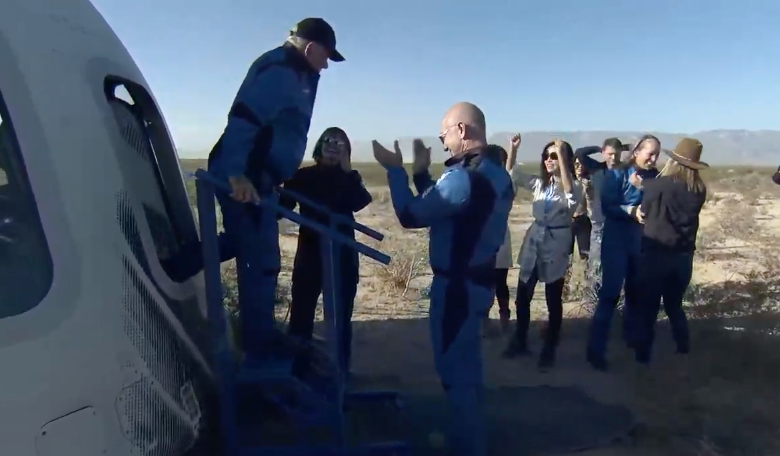William Shatner has now become the oldest person to reach the edge of space, after Blue Origin’s second all civilian crew successfully completes its NS-18 mission.
Boldly going where no 90-year-old has gone before, Shatner knocks the previously held winner of the title, 82-year-old aviator Wally Funk, off the top spot less than three months after she acquired the honour during Blue Origin’s first commercial space flight back in July.
Not one to miss out, Funk’s flight companion Jeff Bezos – Blue Origin’s founder – got in on the action again by helping to chauffeur Shatner and fellow crew mates, Audrey Powers, Chris Boshuizen and Glen de Vries the ten minute drive from the company’s astronaut village to the launch pad in West Texas.
Bezos also accompanied the team as they made their way to the crew capsule, posed for photographs and shook each team member’s hand before they boarded.
After pre-launch checks and relaying messages to and from those on aboard, New Shepard blasted off a little later than originally planned at 15:51 GMT pm.
Two to three minutes later the capsule and booster separated, and the team were allowed to unbuckle their harnesses to experience zero gravity.
Shortly afterward the crew capsule reached the Kármán line – the imaginary boundary 100 kilometres (62 miles) above Earth's mean sea level that is internationally recognised as the beginning of outer space.
The flight proceeded as expected and reached speeds of around 3700 kilometres per hour (2,300 mph) before descending. Its fourth time use booster landed automatically around 15:58pm GMT.
After deploying its parachutes, the crew capsule made its way back to Earth’s surface, landing around 16:01 GMT. All in all the flight lasted just over 10 minutes.
Shatner, who became famous in the 60s for his portrayal of Captain James Tiberius Kirk in the Star Trek TV programme and movie franchises, said Monday that the hardest part of space flight will be getting in and out of the seat.
He spoke candidly of the experience saying, “this is like nothing I have ever experienced before..” as the capsule returned to Earth. “Not only is it different from what you thought, it happens so quickly… Everybody in the world needs to do this,” an emotional Shatner said after touch down.
"What just happened was extraordinary", Shatner told Bezos. "I hope I never recover from this," he added.
While Blue Origin’s second all civilian flight continues the trend of notching up firsts, the mission is also a reminder that many people see space tourism, at least for the foreseeable future, as primarily funded by and for the very rich.
Indeed, the Washington Post reports that analysts at the investment banking firm Canaccord Genuity have estimated that tourism to suborbital space could be an $8 billion industry by the end of the decade, with 1 million potential customers wealthy enough to afford the ticket price and willing to go.
Despite criticism of a toxic working culture at Blue Origin and of supposed worrying safety practices, the company’s director of astronaut sales Ariane Cornell has already hinted that more flights are anticipated this year but no further details regarding passengers or costs of flights have been released yet.











